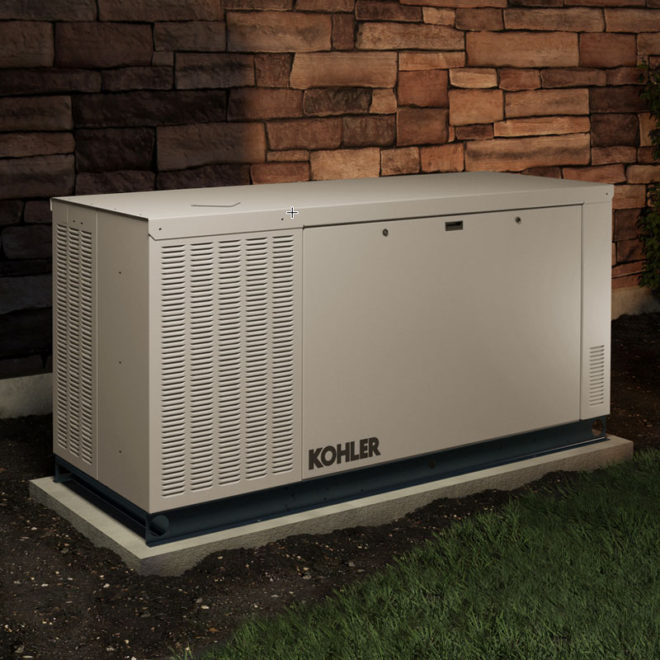Table Of Content

The whole house generator is connected to a power grid, which allows it to run automatically. The generator relies on a transfer switch to detect power interruptions. Once a power outage is identified, the generator’s engine is automatically activated and fueled by natural gas, propane or diesel stored on site.
How to install a whole house generator transfer switch?
Remote monitoring could be a must-have for some homeowners who often evacuate their homes for natural events, or for those on vacation, which is why 5% of the ranking is made up of remote monitoring options among each generator. Whole house generators come in various sizes and capacities, each with a corresponding price range. Smaller generators that power essential circuits will typically be more budget-friendly than larger units that supply power to the entire house. Air-cooled generators are usually less efficient, and they tend to have shorter shelf lives when used in whole-house contexts. Liquid-cooled generators tend to work best, particularly if you live in an area that often reaches temperatures of over 100 degrees, because they are much less likely to overheat. When you’ve determined what power level you need from your whole house generator, you should consider whether you want an air-cooled or liquid-cooled system.
Best Whole House Generators 2024 - Forestry.com
Best Whole House Generators 2024.
Posted: Wed, 17 Jan 2024 08:00:00 GMT [source]
Fuel Types

Whole house generators will typically start at 22,000 watts and can run as high as almost 50,000. The best models take that in stride while lower-performing generators bog down or even stall. We also look at how efficiently a generator uses fuel and how long it runs on a tank of propane. Check out our generator buying guide for more details on our intensive testing program. Large whole-house generators have an output of 10,000 watts or more, which means enough power for all your appliances.
From 800 watts to 2 Megawatts
The Champion 14-kW aXis Home Standby Generator with 200-Amp Whole House Switch runs about $4,799 on average. The Briggs & Stratton 12,000-Watt Automatic Air Cooled Standby Generator runs about $4,299 on average. The Generac Guardian Wi-Fi Enabled Standby Generator runs about $3,879 on average. When in need of temporary power for medical, heating, cooling or electrical reasons, Angi’s electricians can help. The Forbes Home team is committed to bringing you independent, unbiased ratings and information. Plus, our advisory board of licensed professionals fact-checks and reviews our content for accuracy and relevancy.
Plan for an extended power outage and protect everything that matters to you. If, for example, you wanted to power a window air conditioning unit, your immersion water heater and a microwave, you’d need a generator with a 10,000-watt output to be safe. You’ll want to assess your power demands to choose the ideal transfer switch for your whole house generator. The size of your generator dictates the transfer switch capacity you’ll require. A transfer switch that aligns with your generator’s output ensures efficient power distribution across your household circuits.
And are the preferred brand of homeowners who invest in home backup power. Automatic transfer switches offer effortless power restoration by detecting outages and facilitating a smooth switch to generator power. They’re particularly beneficial for those seeking a hands-off experience.
Use the watt usage chart for generators below to calculate the size required for a house. Other standby generator brands to compare are Kohler, Briggs & Stratton, Honda, and Cummins. The average 2,500 square foot house in the U.S. consumes close to 6,900 watts.
Cummins generators feature sound-insulated enclosures, remote diagnostics, and intelligent load management to balance power use across multiple appliances so a smaller generator can power an entire home. Complex jobs may require long trenches for electrical conduit and gas pipes, propane tank installation, or higher labor costs to install liquid-cooled generators. A whole house generator is the most powerful type of home generator available. It’s wired to your electric panel and turns on automatically when you lose power, so your entire home stays online if you have the right size. In contrast to a standby or portable generator, a whole house generator will power many more appliances for as long as you can provide it with fuel.
What size generator for a whole house?
This engine drives an alternator to produce electricity, which is then converted to the appropriate voltage and frequency for household use. A whole house generator, also known as a standby generator, is a device that provides backup electrical power to an entire house in the event of a power outage. It operates automatically and is designed to restore power quickly and seamlessly, allowing you to maintain essential functions and appliances in your home even when the grid power is down. The Generac Guardian 3-Phase 20kW generator is one of the largest, most powerful air-cooled 3-phase generators on the market.
On average, they run from 140 to 200 hours on a propane tank, a shorter duration than their smaller counterparts. Our generator buying guide can help you select the style that’s right for you. Our generator ratings include portable and inverter models in addition to home standby generators.

A Kohler home generator costs $2,700 to $16,000 depending on size, ranging from 6 to 48 kW. Kohler generators run on natural gas or liquid propane, feature remote smartphone monitoring, and include an automatic transfer switch to turn on automatically during power outages. Generac generators cost $2,000 to $5,000 for a 7 to 24 kW whole-house unit, plus $3,000 to $5,000 for installation. Generac’s standby generators turn on automatically during power outages and run on natural gas or liquid propane. About the size of a central air conditioning unit, they run on natural gas or propane, so they don’t need to be refueled as often either. Generac is committed to sustainable, cleaner energy products poised to revolutionize the 21st century electrical grid.
The Briggs & Stratton 12,000 Watt Generator packs quite the punch for a narrow footprint unit and ships at a solid price. Though one of the smallest generators on our best-of list, this product delivers a solid 12,000 watts and comes in as one of the best ranked generators by customer reviews. Generac offers financing options for the purchase of your home generator system.
Whether a generator had an automatic transfer switch, and any included circuits, were analyzed and lumped into the total ranking. Whole house generators are able to do this because they have higher power capacities—22 to 48 kilowatts—than portable generators, and can run significantly longer without maintenance. A whole house generator can provide back-up power for your entire home, including for essential appliances like your air conditioner, sump pump and refrigerator. Property estimated and installed, you should be able to run everything at full capacity, whether you’re going off the grid permanently or you’re forced off temporarily due to an emergency. While the Champion 14-kW aXis generator is one of the most expensive whole house generators on our list, it includes excellent features to help it stand apart from its competition.
The Honeywell 10kW Home Generator had the quietest engine of the whole house generators we evaluated, with a relatively low 57 decibels of noise. You should expect to pay $1,500 at the least and $7,500 at the most, depending on the type of generator you need and the cost of labor in your area. With a yes or no based on whether a generator included overload protection, each product gained or lost points totaling 5% of the total ranking. Each generator was evaluated based on whether or not it offered a load management option, which is a popular add-on for many generator inquirists. Whole house generators can run quite loudly (65 decibels on the low end to 69+ on the high end), so it’s important to take that range into consideration when purchasing and placing your generator.
Introducing the Guardian 26kW Home Standby Generator, from the #1 Manufacturer of Backup Power Products. With more than 60 years of experience in the backup power industry, it’s no wonder why 8 out of 10 home standby generators installed are Generac. Selecting "Select My Options" provides a backup generator recommendation based on your home's size and corresponding outlets and lighting requirements and assumes natural gas appliances in the baseline calculation. If your home is an all electric home and includes electric appliances like an electric range, electric clothes dryer, electric water heater, etc. You can add these items below to accurately reflect your homes specific backup power needs.

No comments:
Post a Comment